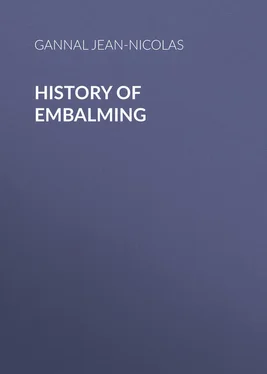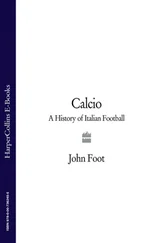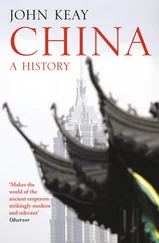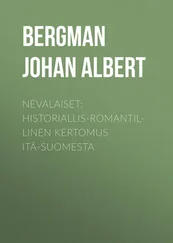Jean-Nicolas Gannal - History of Embalming
Здесь есть возможность читать онлайн «Jean-Nicolas Gannal - History of Embalming» — ознакомительный отрывок электронной книги совершенно бесплатно, а после прочтения отрывка купить полную версию. В некоторых случаях можно слушать аудио, скачать через торрент в формате fb2 и присутствует краткое содержание. Жанр: foreign_antique, foreign_prose, на английском языке. Описание произведения, (предисловие) а так же отзывы посетителей доступны на портале библиотеки ЛибКат.
- Название:History of Embalming
- Автор:
- Жанр:
- Год:неизвестен
- ISBN:нет данных
- Рейтинг книги:5 / 5. Голосов: 1
-
Избранное:Добавить в избранное
- Отзывы:
-
Ваша оценка:
- 100
- 1
- 2
- 3
- 4
- 5
History of Embalming: краткое содержание, описание и аннотация
Предлагаем к чтению аннотацию, описание, краткое содержание или предисловие (зависит от того, что написал сам автор книги «History of Embalming»). Если вы не нашли необходимую информацию о книге — напишите в комментариях, мы постараемся отыскать её.
History of Embalming — читать онлайн ознакомительный отрывок
Ниже представлен текст книги, разбитый по страницам. Система сохранения места последней прочитанной страницы, позволяет с удобством читать онлайн бесплатно книгу «History of Embalming», без необходимости каждый раз заново искать на чём Вы остановились. Поставьте закладку, и сможете в любой момент перейти на страницу, на которой закончили чтение.
Интервал:
Закладка:
But to return to the recital of Herodotus. “There are in Egypt, certain persons whom the law charges with embalming, and who make a profession of it.
“When a body is brought to them, they show the bearers models of the dead in wood. The most renowned represents, they say, him whose name I am scrupulous to mention ; they show a second, which is inferior to the first, and which is not so costly; they again show a third of a lower price. They afterwards demand after which of the three models they wish the deceased to be embalmed. After agreeing about the price, the relatives retire; the embalmers work alone, and proceed as follows, in the most costly embalming. They first withdraw the brain through the nostrils, in part with a curved iron instrument, and in part by means of drugs, which they introduce into the head; they afterwards make an incision in the flank with a sharp Ethiopian stone.
“The body being extended upon the earth, the scribe traces on the left flank the portion to be cut out. He who is charged with making the incision, cuts with an Ethiopian stone, as much as the law allows; which having done, he runs off with all his might, the assistants follow, throwing stones after him, loading him with imprecations, as if they wished to put upon him this crime. They regard, indeed, with horror, whoever does violence to a body of the same nature as their own. Whoever wounds it, or in one word, whoever offers it any harm .” ( Diodorus , book I, t. i. p. 102.)
“They withdraw the intestines through this opening, clean them, and pass them through palm wine, place them in a trunk; and among other things they do for the deceased, they take this trunk, and calling the sun to witness, one of the embalmers on the part of the dead, addresses that luminary in the following words, which Euphantus has translated from his vernacular tongue. ‘Sun, and ye too, Gods, who have given life to men, receive me, and grant that I may live with the eternal Gods; I have persisted all my life in the worship of those Gods, whom I hold from my fathers, I have ever honoured the Author of my being, I have killed no one, I have committed no breach of trust, I have done no other evil: if I have been guilty of any other fault during life, it was not on my own account, but for these things.’ The embalmer, in finishing these words, shows the trunk containing the intestines, and afterwards casts it into the river. As to the rest of the body, when it was pure, they embalmed it.” ( Porphyr., De abstinentia ab esu animalium , book 17, § 10, p. 329.)
“Afterwards they fill the body with pure bruised myrrh, with canella and other perfumes, excepting incense; it is then sown up. When that is done they salt the body in covering it with natrum for seventy days.” (Natrum, with the intention of carrying off, and drying the oily, lymphatic, and greasy parts; but this ought to have been the first operation, for if they had commenced with filling the body with myrrh and aromatics, previous to salting it, the natrum, acting on the balsamic matters, and forming with their oils a soapy matter, very soluble and readily carried off by the lotions, would have destroyed the greater part of the aromatics. Besides, Diodorus does not mention natrum.) “It is not permitted to let them remain longer in the salt. The seventy days elapsed, they wash the body and entirely envelope it in linen and cotton bandages, soaked with gum Arabic, commi , which the Egyptians used generally in place of glue. 13 13 It is not improbable that the use of these gummy bandages gave origin to the new and improved method of bandaging fractured limbs – the bandages being first soaked in a solution of gum Arabic, or in a preparation of starch, called dextrine. — Tr.
The relatives now reclaim the body; they have made a wooden case of the human form, in which they enclose the corpse, and put it in a chamber destined for this purpose, standing erect against the wall. Such is the most magnificent method of embalming the dead. Those who wish to avoid the expense choose this other method; they fill syringes with an unctuous liquor which they obtain from the cedar; with this they inject the belly of the corpse without making any incision, and without withdrawing the intestines; when this liquor has been introduced into the fundament they cork it, in order to prevent its ejectment; the body is then salted for the prescribed time. The last day, they draw off from the body the injected liquor; it has such strength that it dissolves the ventricles and intestines, which come away with the liquid. The natrum destroys the flesh, and there remains of the body, only the skin and bones. This operation finished, they return the body without doing anything further to it.
“The third kind of embalming is only for the poorer classes of society. They inject the body with a fluid named surmata ; they put the body into natrum for seventy days, and they afterwards return it to those who brought it. As to ladies of quality, when they are dead, they are not immediately sent to the embalmers, any more than such as are beautiful or highly distinguished; these are reserved for three or four days after death. They take this precaution lest the embalmers might pollute the bodies confided to their care.
“It is reported that one was surprised in the act, with a woman recently dead, and that on the accusation of one of his comrades.”
The preceding recitals have been the subject of numerous commentations, discussions, and researches. It is astonishing that Herodotus has omitted desiccation; but it naturally took place during the time consecrated to preparation. Some assert that the body was in the first place salted, and subsequently penetrated with resinous and balsamic substances, which, incorporating with the flesh, prevented putrefaction: others pretend that the body, after having been salted, was dried, and that it was not until after this desiccation that the resinous and balsamic substances were applied. A simple inspection of the mummies is sufficient to reject the first opinion. What union, indeed, could these last named matters have contracted with the fluids of the tissues? and how can we conceive from thence, that bodies often filled with corrupted serosity, could have resisted the intestine effects of such active causes in producing decomposition?
M. Rouelle thought that the natrum was a fixed alkali, which acted after the manner of quick-lime, despoiling the bodies of their lymphatic and greasy fluids, leaving only the fibrous and solid parts. Thus viewing in this manner the Egyptian process, it removes an error into which Herodotus has fallen on the subject of the first class of embalming. It is there stated, that they filled the belly of the corpse with myrrh, canella, and other perfumes, except incense , and that afterwards they put it into the natrum and then washed it. But of what use would have been these resinous matters, with which the alkali of the natrum would soon form a soapy mass, which the lotions would have carried off, at least, in great part? It is much more reasonable to suppose that these balsamic and resinous substances were not applied to the bodies until after they were withdrawn from the natrum .
The same author points out another inaccuracy, in what Herodotus has taught us on the bandages of the mummies. Very few mummies, says he, are enveloped agreeably to the description of Herodotus, that is to say, the linen bandages are not glued together with gum alone, applied directly to the body when simply dried without any resinous substances. Such kind of embalming is the least costly, although Herodotus describes it as the richest and dearest. The mummy preserved in the cabinet of St. Geneviève, and the two which are in that of the Celestins, may throw some new light on this passage of Herodotus, and confirm my conjectures. These mummies have two kinds of bandages; the body and the limbs are each separately invested with linen bandages, endued with resin or bitumen, and they are so intimately united together that they form but one mass. This is doubtless the reason that some authors have believed that this thickness was only embalmed flesh. There are other linen bandages without any bituminous substance, which envelope the whole body; both the arms are crossed upon the stomach, and the legs are glued together; these mummies are swaddled in new bandages, or, if you please, by this last bandage, just as infants are swaddled; these bandages are yellow, particularly those of the mummy of the cabinet of Saint Geneviève, and are absolutely destitute of resinous substance. We may, then, readily conclude, that these bandages have been only simply invested with gum. It appears that Herodotus had forgotten to describe the use of the first bandage, employed to retain the resinous matter on the surface of the body, and having probably seen among the embalmers, or elsewhere, some bodies swaddled like infants, he only described the second bandage.
Читать дальшеИнтервал:
Закладка:
Похожие книги на «History of Embalming»
Представляем Вашему вниманию похожие книги на «History of Embalming» списком для выбора. Мы отобрали схожую по названию и смыслу литературу в надежде предоставить читателям больше вариантов отыскать новые, интересные, ещё непрочитанные произведения.
Обсуждение, отзывы о книге «History of Embalming» и просто собственные мнения читателей. Оставьте ваши комментарии, напишите, что Вы думаете о произведении, его смысле или главных героях. Укажите что конкретно понравилось, а что нет, и почему Вы так считаете.












